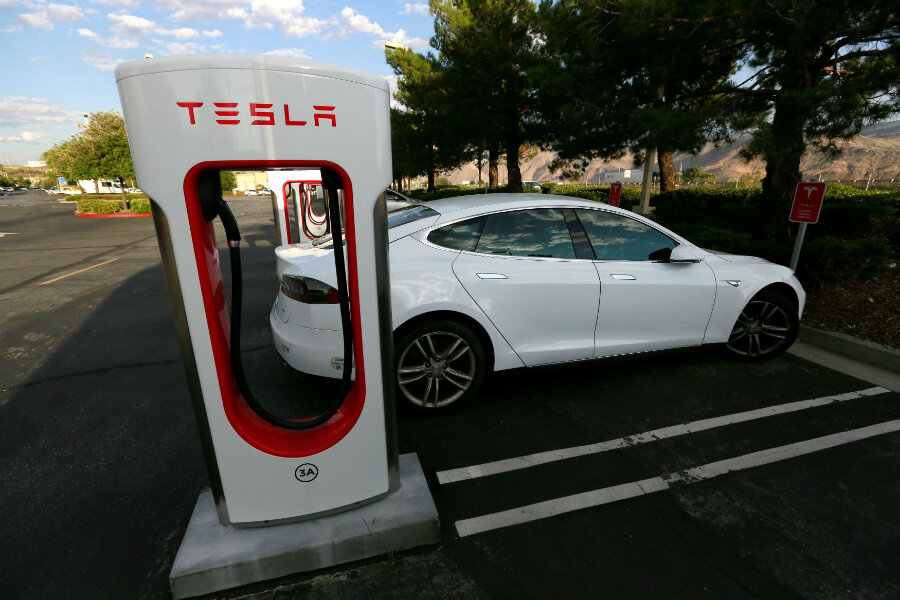Tesla unveils a new battery. Will more zoom make a difference?
Loading...
Even as Tesla Motors experiments with more affordable vehicles, it continues to strengthen its luxury offerings.
With a new battery upgrade, Tesla’s Model S will be fastest accelerating mass-produced car – only rivaled by limited-run, luxury models from Porsche and Ferrari. Tesla chief executive officer Elon Musk has said that the popular all-electric sedan can accelerate from 0-60 miles per hour in just 2.5 seconds.
The Model X, which was already the fastest SUV on the market, is also getting a battery upgrade. In addition to its distinctive falcon-wing doors, the model will now boast a 2.9-second acceleration from 0-60 mph.
Tesla’s new 100-kilowatt-hour battery pack will also extend driving range, allowing upgraded vehicles to drive for more than 300 miles without recharging.
“These are very profound milestones and I think will help convince people around the world that electric is the future,” said Mr. Musk in a press conference.
But Tesla still faces some major obstacles. The company was investigated by US federal safety regulators after its “autopilot” feature was linked to a fatal crash in Florida. Meanwhile, Tesla’s finances have given some investors pause.
The automaker has recorded consistent net losses in the last 12 quarters and has failed to meet projected delivery goals. That’s because, in many ways, Tesla still has a start-up mentality, writes Richard Read:
While Tesla's losses might sound alarming, they're probably to be expected for a company that is still, to many minds, a start-up. As the saying goes, you've got to spend money to make money, and Tesla is spending like crazy in the hope that its investments will pay off down the road. (Based on the very strong demand for the Model 3 sedan, that may be a safe bet.)
Translation: the numbers aren't so good now, but once Tesla has its facilities in order, the financials could level out. Until then, it will have to make do with fairly modest sales revenue and funds generated from sources like stock sales, which pumped $1.7 billion into the company's coffers in May.
Even as revenue climbs for existing products, the automaker has pushed to spend more. It has made huge capital investments across several different sectors, including the $2.6 billion purchase of solar power provider SolarCity. It has spent further billions on a Nevada gigafactory and pre-production for the Model 3. Ultimately, Tesla has placed its bet that these investments will pay off in the long-term.
But even in the midst of financial losses, Tesla does have one major edge over its competitors: design. The Model S, Model X and upcoming Model 3 were each engineered to be electric vehicles. While other auto companies retrofitted their gasoline cars with electric motors, Tesla started from scratch, writes John O'Dell:
Because Tesla designers started with a clean slate, they were able to develop the car around its electric powertrain and battery. The battery pack didn’t have to be squeezed into spaces previously occupied by a gasoline car’s trunk, rear seats or engine bay. And there’s no transmission hump or drive shaft tunnel.
That means sleeker design components, roomier interiors and more powerful batteries. And if, as Musk hopes, electric cars are the future, that will likely be a critical advantage for Tesla.






